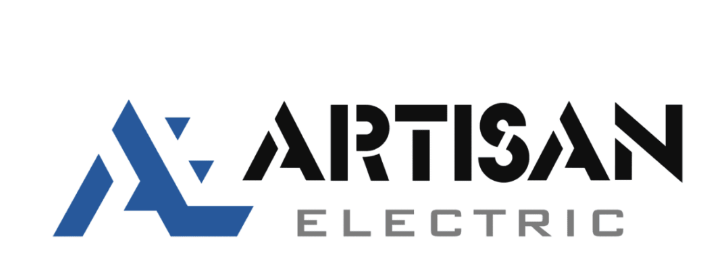In the realm of home energy storage, the Franklin Battery vs Tesla Powerwall debate is a prominent one. But how do they differ, and which suits your needs? This article dissects these systems based on key comparisons in energy storage capacity, efficiency, cost, and overall performance. It’s the essential guide for homeowners looking to make a well-informed choice without the fluff in the Franklin Battery vs Tesla Powerwall decision-making process.
Key Takeaways
- Franklin Home Power offers greater energy storage scalability with the ability to link up to 15 units for a total of 204 kWh, while both it and the Tesla Powerwall have similar base storage capacities (13.6 kWh and 13.5 kWh respectively) and promise at least 70% capacity retention at the end of their warranties.
- Franklin Home Power boasts a higher peak power output (10 kW) compared to Tesla Powerwall’s (5 kW), providing better performance for starting large appliances, and both systems offer 5 kW of continuous power output and high round-trip efficiencies (89-90%).
- Installation and user experience differ between the two; Franklin allows more flexibility with installation while Tesla requires certified installers, and both brands offer proprietary apps for energy monitoring and smart management, yet the overall cost and environmental impact require careful consideration by homeowners.
Head-to-Head Comparison: Franklin Home Power vs Tesla Powerwall

When comparing home energy storage solutions, the Franklin Home Power and Tesla Powerwall are often top of mind. Both offer similar energy storage capacities, with Franklin Home Power providing 13.6 kWh per unit and the Tesla Powerwall a slightly lower 13.5 kWh. However, there are several features that set them apart, including peak power output and warranty terms, which are critical factors for homeowners choosing a solar battery.
We’ll delve deeper into their differences and similarities, examining:
- their energy storage capabilities
- efficiency
- performance
- warranty
These are key elements in assessing home energy storage solutions, which are designed to store energy efficiently.
Energy Storage Capabilities
One of the key features of any solar battery is its energy storage capacity, also known as battery capacity. An individual Franklin Home Power battery unit has a storage capacity of 13.6 kWh, which can be fully utilized without harming the battery. This is a significant advantage over other batteries on the market that don’t allow for full usage of their capacity.
But what truly sets the Franklin Home Power system apart is its scalability. The design of the system allows for up to 15 units to be combined, achieving a maximum combined energy storage capacity of 204 kWh. This scalability means that you can start with fewer units and expand as your energy needs grow.
Efficiency and Performance
Another pivotal factor of solar batteries is their efficiency. It’s about how much electricity can be utilized after the battery has been charged. For example, Franklin Home Power batteries boast a round-trip efficiency of 89%, meaning that there’s an 11% loss of energy during storage.
On the other hand, the Tesla Powerwall has a slightly higher round-trip efficiency of 90%. While this difference might seem small, every percentage point counts when it comes to maximizing the utility of stored solar power.
Warranty and Longevity
In terms of warranty and longevity, Franklin Home Power surpasses the typical 10-year standard for solar batteries with a 12-year warranty. It’s worth noting here that both Franklin Home Power and Tesla Powerwall guarantee a minimum of 70% capacity retention at the end of their respective warranty periods. This assurance gives homeowners peace of mind knowing that their investment will continue to deliver value for many years.
Breaking Down the Technical Specifications

Delving into technical specifications provides a more detailed comparison between Franklin Home Power and Tesla Powerwall. Both systems offer a continuous power output of 5 kW, which is the power level that a battery can supply consistently over time. This output is vital for the operation of essential home appliances.
Yet, Franklin Home Power excels in providing backup power during a grid outage with a peak power output of 10 kW, compared to Tesla Powerwall’s 5 kW. Peak power is crucial for starting up large appliances that require a surge of power, especially when relying on DC electricity.
Continuous Power vs Peak Power
Understanding the difference between continuous power and peak power is fundamental in comprehending home energy storage. Continuous power output indicates the level of power that a battery can supply consistently over time, which is vital for powering essential home appliances. Both the Franklin Home Power battery and the Tesla Powerwall offer a continuous power output of 5 kW.
Peak power, on the other hand, determines the battery’s ability to handle short-term high energy demands. This is particularly important during power outages when turning on appliances like air conditioners and dryers. Here, Franklin Home Power has the upper hand with a peak power output of 10 kW compared to Tesla Powerwall’s 5 kW. So, how much power can be provided during these peak times is crucial for homeowners.
Depth of Discharge and Battery Health
The depth of discharge, indicating the percentage of the battery’s capacity that can be used without inflicting damage, is another vital aspect to consider. For solar batteries, a higher depth of discharge is generally more desirable. However, using the entire capacity of a battery can shorten its life and reduce its ability to hold a charge over time.
In this respect, Franklin Home Power battery shines with a depth of discharge rating of 100%, indicating optimized energy use without harming the battery. This is a significant advantage, as the lifespan and performance of home battery systems, including their capacity to hold a charge, decline over time with their depth of discharge.
Design and Installation Considerations
Other significant aspects to consider when comparing the Franklin Home Power and Tesla Powerwall are design and installation. Franklin Home Power systems utilize a two-component structure known as aPower for the battery and inverter, and aGate for grid, solar, and energy management connections. The AC-coupling design of the Franklin Home Power batteries allows for compatibility with both new and existing solar installations, providing flexibility in home energy storage solutions.
The Franklin Home Power’s modular design, which can be expanded via additional aPower units, caters to the needs of different household sizes and energy requirements. Furthermore, ease of installation is a key advantage of Franklin Home Power, which can be integrated into home energy systems without extensive or complicated electrical work.
Modular Battery Systems

The modular design of both systems allows for flexibility in meeting varying energy demands. The Tesla Powerwall system allows for the addition of multiple Powerwall batteries, paired with a Backup Gateway or Backup Switch, for homeowners to flexibly augment their energy storage according to need.
On the other hand, the Franklin Home Power system can integrate up to 15 aPower batteries using an aGate controller, enabling scalability for higher energy demands. This level of scalability is a boon for homeowners who anticipate their energy needs to grow over time.
User Experience and Control
User experience and control form integral parts of home energy storage solutions. Homeowners can manage their Franklin Home Power and Tesla Powerwall energy systems through their respective apps, offering a range of controls for energy efficiency and insight.
Both the Tesla Powerwall and Franklin Home Power systems enhance user experience through smart energy management features, with the former capable of learning the user’s energy patterns and receiving updates to improve functionality over time.
Monitoring Your Solar and Battery System

The proprietary apps of both systems provide user-friendly control and monitoring of energy usage. The Tesla app gives users data and insights on their home’s energy usage and allows for monitoring of daily operations and energy flow, including notifications for system status changes like power outages.
On the other hand, the FranklinWH app offers homeowners the following features:
- Real-time monitoring of energy generation and usage
- Historical data of energy generation and usage
- The ability to choose between different battery operating modes, including self-consumption, backup standby, and load shifting
These features give homeowners complete control over their energy usage.
Smart Energy Management

Smart energy management features enhance user experience and help homeowners save money. The Tesla app’s energy optimization feature allows users to efficiently power their homes and charge their vehicles, contributing to smart energy management.
On the other hand, the aGate smart energy management system in the Franklin Home Power manages all home appliances, smart circuits, and controls battery charging and power flow. Through smart energy management and cost optimization, both Tesla Powerwall and Franklin Home Power systems help homeowners save money and enhance their ability to manage energy use effectively.
The Environmental Impact
The environmental impact of solar batteries is substantial. DC-coupled batteries like those in the Franklin Home Power system are more efficient than AC-coupled batteries, leading to less energy loss and contributing to a smaller carbon footprint. In fact, the Franklin Home Power system utilizes some of the best solar batteries available, which store excess electricity from solar panels, diminishing dependence on the grid and fossil fuels.
However, it’s also important to consider that the manufacturing of solar batteries is energy-intensive and can contribute to greenhouse gas emissions. End-of-life solar batteries can cause environmental contamination if not properly disposed of. Despite these challenges, there are ongoing efforts to innovate in the production and recycling processes of solar batteries, striving to use less harmful materials and improve their environmental sustainability.
Adapting to Different Energy Needs
Both Franklin Home Power and Tesla Powerwall are engineered to cater to varying energy requirements. The Tesla Powerwall is designed for whole home backup or partial home backup depending on the size of the home’s solar system and utility approvals, while the Franklin Home Power system’s modular design allows for various power supply configurations.
Additionally, the Franklin Home Power system can integrate with solar installations for added flexibility, and battery systems like Tesla Powerwall can extend their power duration through solar panel system integration or usage of multiple batteries. These attributes make both systems ideal for households seeking energy independence.
Proven Track Record in the Solar Industry
Both FranklinWH and Tesla boast of proven track records in the solar industry. FranklinWH Energy Storage, Inc. was founded in 2019 and has rapidly expanded its presence in the U.S. market, with over 2,000 installation companies on board.
On the other hand, Tesla Powerwall has established itself as an innovative and reliable force in the home energy storage market within the solar industry, utilizing lithium iron phosphate technology. FranklinWH’s products are notable for their easy commissioning and the extensive support offered to installers, enhancing the company’s reputation in the solar industry.
Summary
In summary, both the Franklin Home Power and Tesla Powerwall offer innovative solutions for home energy storage. They both have unique strengths and cater to different needs, making the choice between them dependent on factors such as energy storage capacity, efficiency, warranty, installation, cost, and user experience. Ultimately, the decision will depend on individual homeowner’s needs and preferences. However, one thing is clear: both systems represent a step forward in our journey towards a sustainable, energy-efficient future.
Frequently Asked Questions
What is the energy storage capacity of Franklin Home Power and Tesla Powerwall?
The Franklin Home Power battery has a storage capacity of 13.6 kWh, just slightly higher than the Tesla Powerwall’s 13.5 kWh.
What is the difference between continuous power and peak power?
Continuous power refers to the consistent power output of a battery over time, while peak power indicates the battery’s ability to handle short-term high energy demands. This means that continuous power represents sustained performance, while peak power represents the battery’s temporary burst capability.
How can homeowners monitor their solar and battery system?
You can monitor your solar and battery system by using the Franklin Home Power and Tesla Powerwall energy system apps, which offer control and monitoring features for energy efficiency.
How do Franklin Home Power and Tesla Powerwall adapt to different energy needs?
Both the Tesla Powerwall and Franklin Home Power systems offer adaptable energy solutions, with the Tesla Powerwall catering to whole or partial home backup based on system size and approvals, and the Franklin Home Power system featuring a modular design for flexible power supply configurations.

